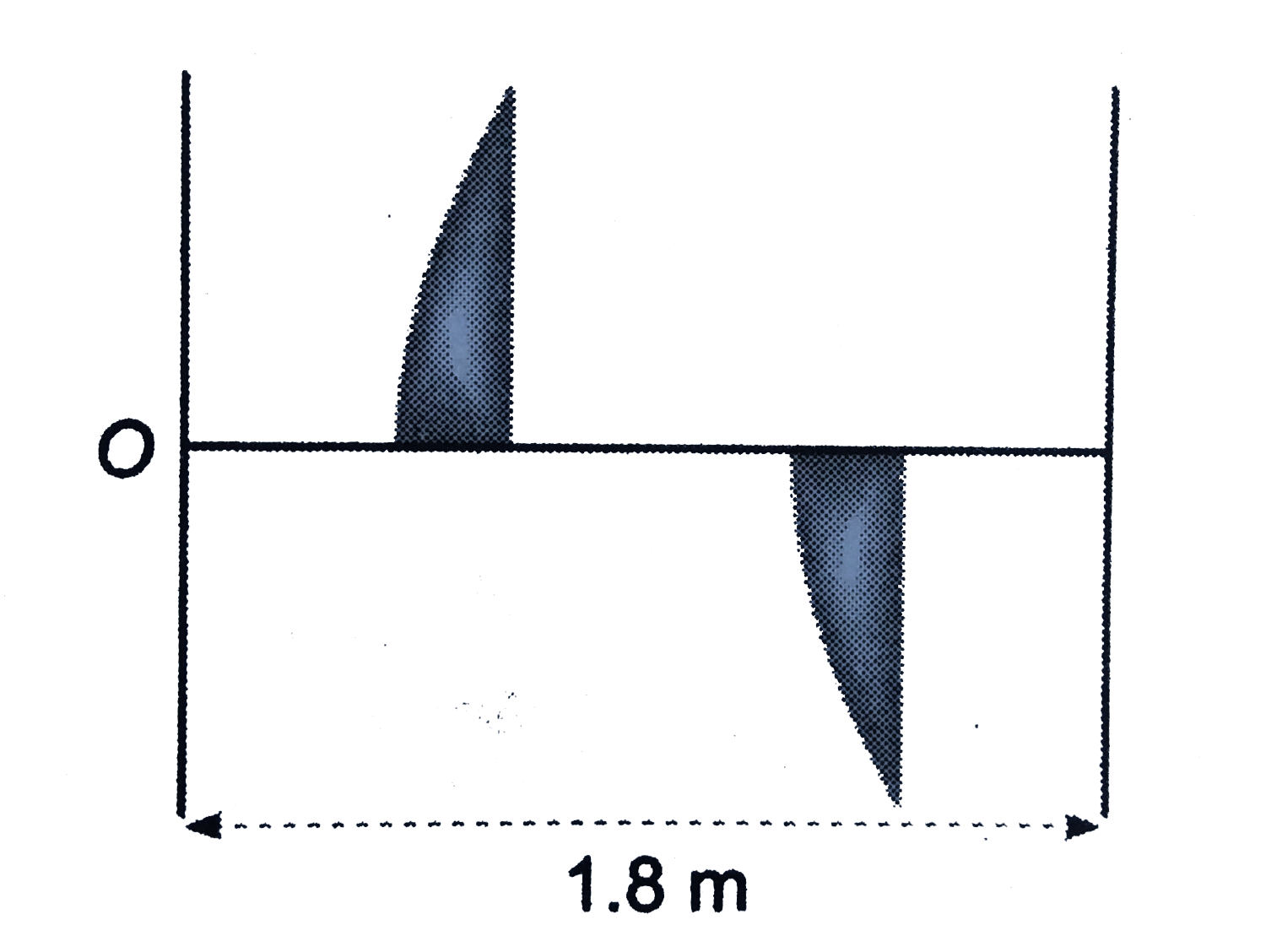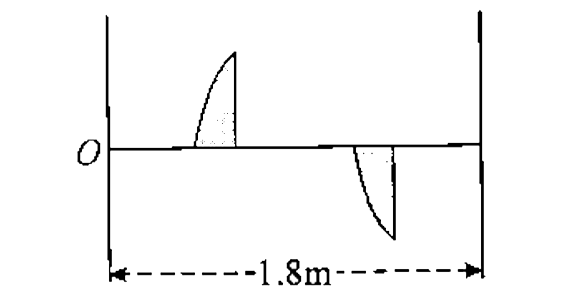A thin plano-convex lens of focal length f is split into two halves. One of the halves is shifted along the optical axis as shown in figure. The sepration between object and image planes is 1.8m. The magnification of the image formed by one of the half lens is 2. Find the focal length of the lens and separation between the two halves. Draw the ray diagram for image formation.

Let magnification caused by the first lens be 2 and distance OL1=x. Distance v of image from first lensL1 is given by
m=vu=2⇒v=2u=2x.
Clearly, u+v=1.8⇒x+2x=1.8m
or 3x=1.8m⇒x=1.83=0.6m
By sign convention,
u=−x=−0.6m,υ=2x=1.2m
Lens formula 1f=1v−1u gives
1f=11.2+10.6=1+21.2
∴ Focal length f=1.23=0.4m
For real image, lens formula takes the form
1f=1v+1u
Clearly, u and v are interchangeable. Therefore, for lens L2
u′=v=1.2m and v′=0.6m
OL1=L2I2=x
If d is the separation between the lenses, then
x+d+x=1.8m
∴d=1.8−2x=1.8−2×0.6=0.6m
Method-2 Since the magnification for L1 is 2
⇒vu=−2⇒D+d2−D−d2=−2
D+dD−d=2⇒D=1.8m,d=0.6m.
f=D2−d24D=(1.8+0.6)(1.8−0.6)4×1.8=0.4m

Topper's Solved these Questions
- GEOMETRICAL OPTICSBOOK - CENGAGE PHYSICS ENGLISHCHAPTER - GEOMETRICAL OPTICSEXERCISE - Exercise1.1
14 Videos
- GEOMETRICAL OPTICSBOOK - CENGAGE PHYSICS ENGLISHCHAPTER - GEOMETRICAL OPTICSEXERCISE - Exercise1.2
20 Videos
- GEOMETRICAL OPTICSBOOK - CENGAGE PHYSICS ENGLISHCHAPTER - GEOMETRICAL OPTICSEXERCISE - Integer Type
4 Videos
- ELECTRON,PHONTS,PHOTOELECTRIC EFFECT & X-RAYSBOOK - CENGAGE PHYSICS ENGLISHCHAPTER - ELECTRON,PHONTS,PHOTOELECTRIC EFFECT & X-RAYSEXERCISE - dpp 3.3
15 Videos
- HEATING EFFECT OF CURRENTBOOK - CENGAGE PHYSICS ENGLISHCHAPTER - HEATING EFFECT OF CURRENTEXERCISE - Thermal Power in Resistance Connected in Circuit
27 Videos
Similar Questions
A thin plano-convex lens of focal length f is split into two halves. One of the halves is shifted along the optical axis as shown in figure. The separation between object and image planes is 1.8 m. The magnification of the image, formed by one of the ball lens is 2. Find the focal length of the lens and separation between the two halves. Draw the ray diagram for image formation.

View SolutionIf a equiconvex lens of focal length f is cut into two halves by a plane perpendicular to the principal axis, then
View Solution
Knowledge Check
A concave lens forms the image of an object such that the distance between the object and image is 10cm and the magnification produced is 1/4. The focal length of the lens will be
A−6.2cmB−4.4cmC−8.6cmD−10cm
An equiconvex lens of focal length 15cm is cut into two equal halves in thickness. What is the focal length of each half ?
View SolutionShown an object and its image formed by a thin lens. Then the nature and focal length of lens is

View SolutionGraph of position of image vs position of point object from a convex lens is shown. Then, focal length of the lens is
_E01_287_Q01.png)
View SolutionThe distance between an object and its upright image is 20cm. if the magnification is 0.5, what is the focal length of the lens that is being used to form the image?
View SolutionA convex lens of focal length f is placed somewhere in between an object and a screen. The distance between the object and the screen is x. If the numerical value of the magnification produced by the lens is m, then the focal lnegth oof the lens is .
View SolutionA cocave lens forms the image of an object such that the distance between the object and image is 10 cm and the magnification produced is 1/4. the focal length of the lens will be
View SolutionThe distance between the object and its real image from the convex lens is 60 cm and the height of image is two times the height of object . The focal length of the lens is
View Solution
